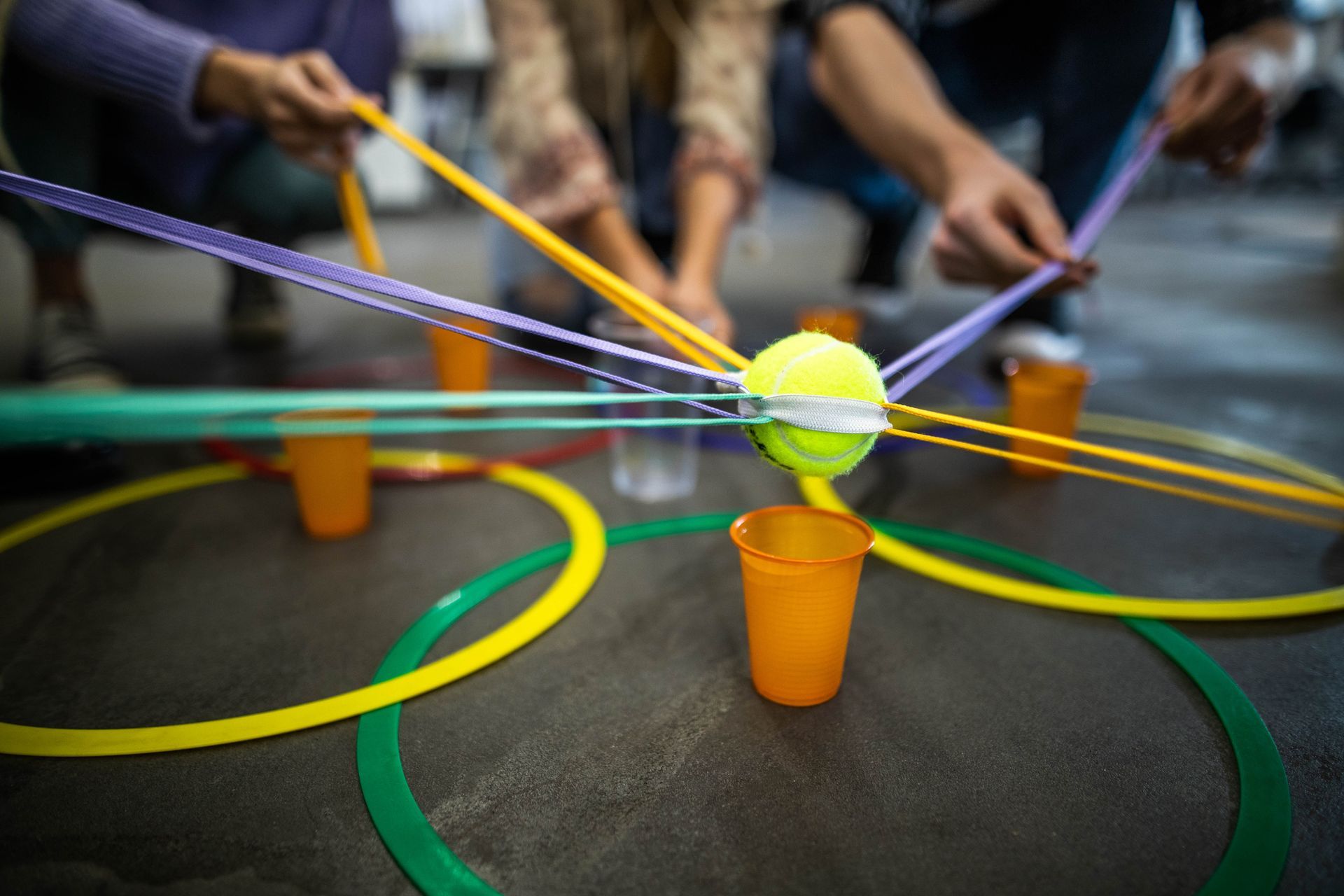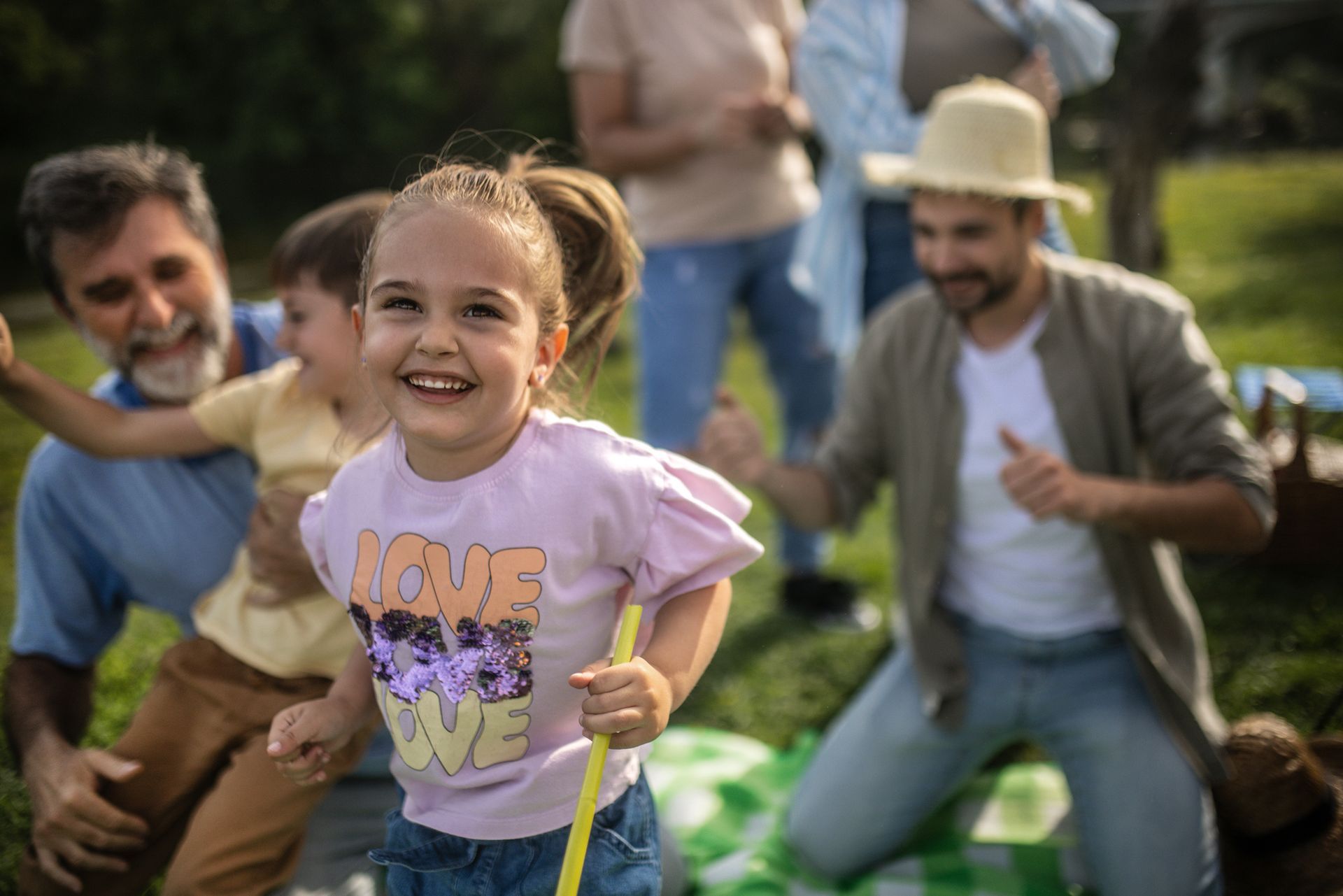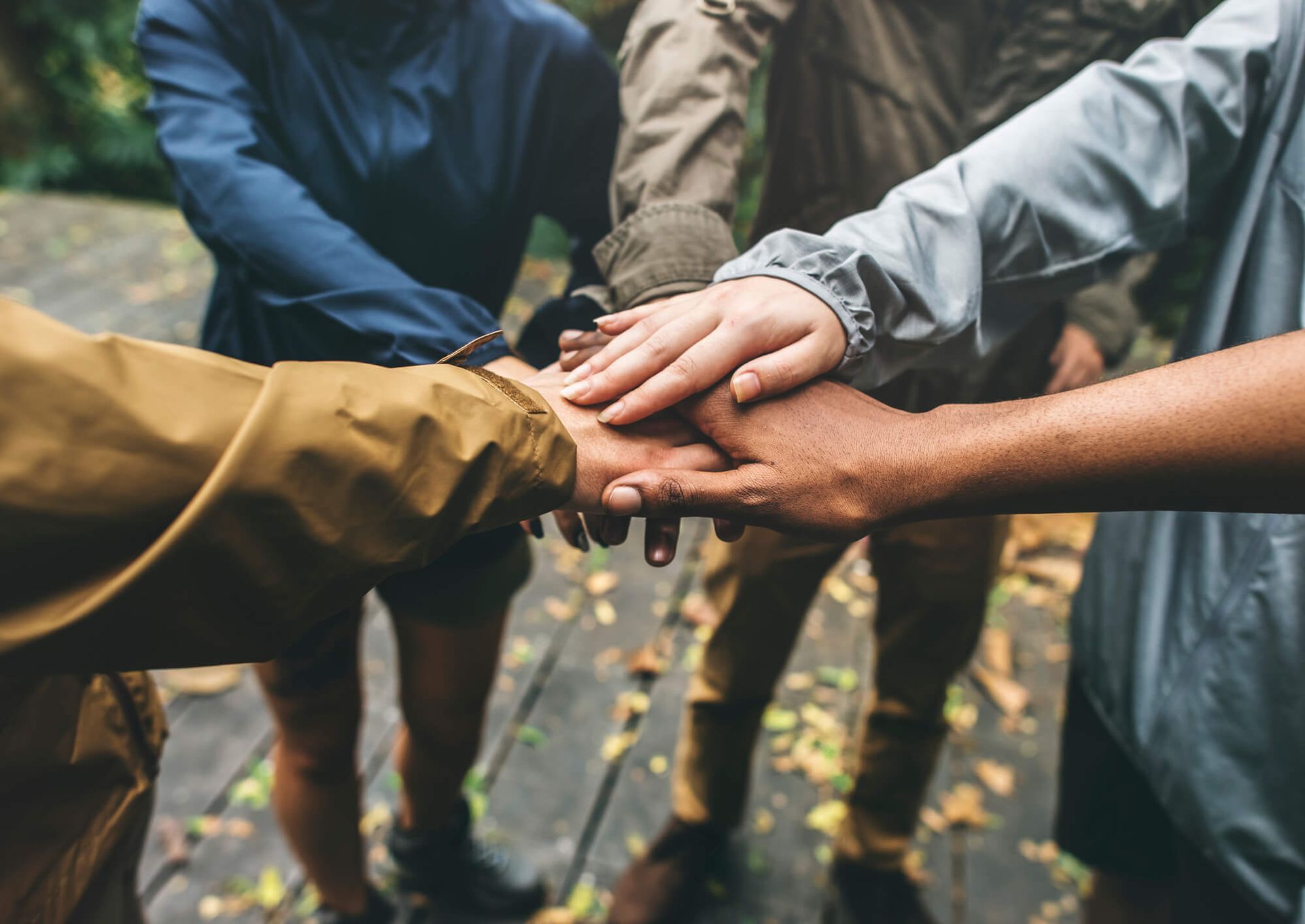Top 35 Communication and Team Building Activities to Boost Your Team's Efficiency
Are you looking for effective ways to improve your team’s communication and collaboration? This article outlines 35 powerful communication and team-building activities designed to boost your team’s efficiency. Dive in to discover activities that will foster trust, enhance problem-solving skills, and strengthen team dynamics.
Key Takeaways
- Effective communication is vital for successful team building, enhancing collaboration and trust among members.
- Engaging in team-building activities significantly improves team dynamics, employee engagement, and problem-solving skills.
- Incorporating fun and interactive games fosters a strong team bond, leading to better communication and teamwork both in and out of the office.
Importance of Communication in Team Building
Effective communication is the cornerstone of any successful team. It’s the glue that holds team building activities together, helping to bring teams closer with a sense of purpose in a fun way. When team members engage in open communication exercises, they begin to see each other as more than just colleagues, building lasting connections that go beyond the workplace. This transformation from mere coworkers to a cohesive unit is where the magic happens.
Strong communication skills lead to better collaboration and team cohesion, which are vital for a team’s success. Imagine a team where everyone is on the same page, sharing ideas freely and working together seamlessly. This level of collaboration doesn’t just happen overnight; it requires deliberate effort through well-designed good communication team building activities that promote healthy communication.
Enhancing communication leads to significant improvements in team efficiency and overall performance.
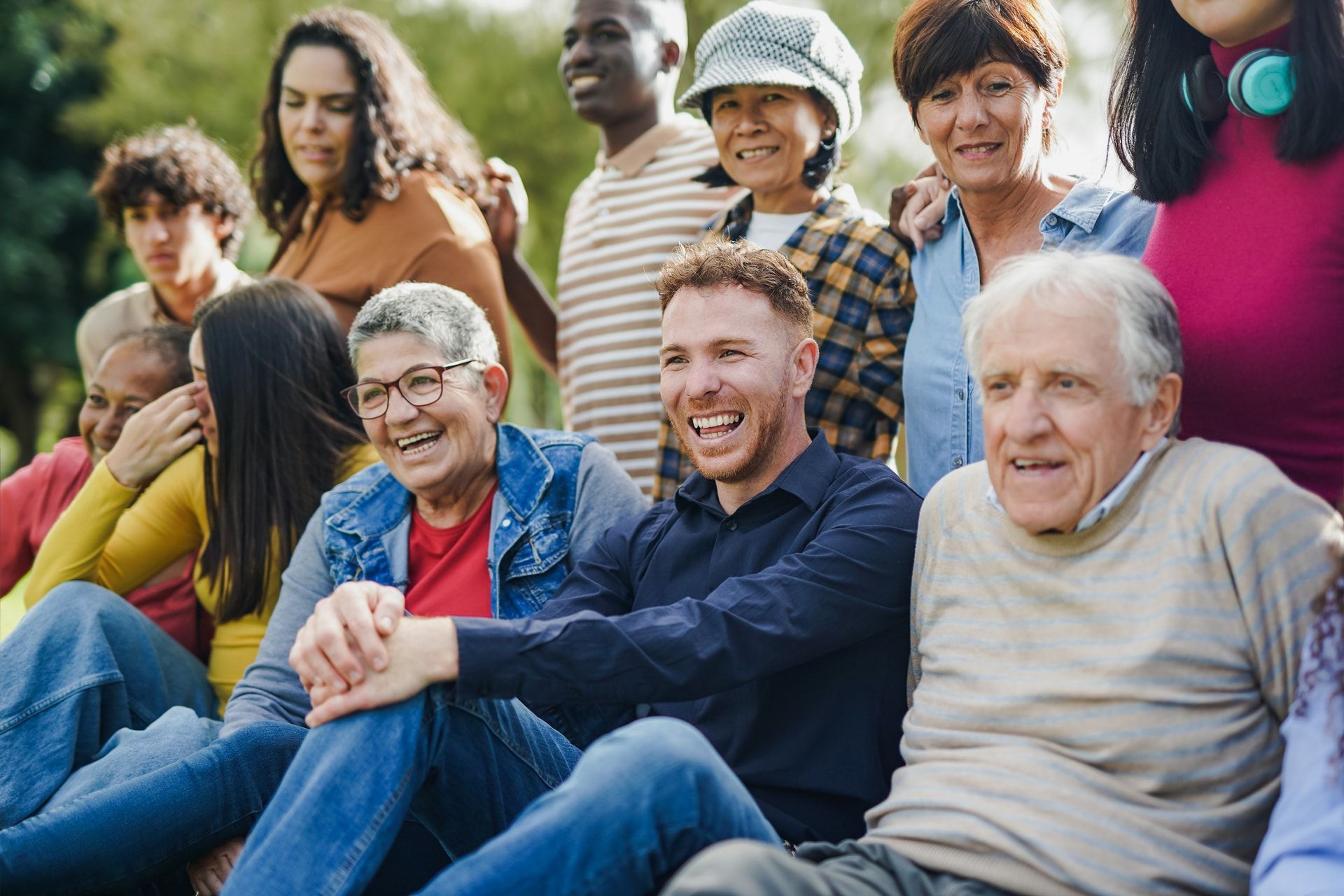
Enhances Collaboration
Team building fosters open communication, allowing team members to express ideas and collaborate more effectively. When team members feel comfortable sharing their personal experiences through activities, communication among them naturally improves. This sharing creates a shared language that helps streamline progress and enhances collaborative efforts, fostering team spirit.
Clarity and simplicity in written communication prevent misunderstandings and enhance collaboration. Teams can significantly improve their interactions by using simple methods to enhance communication and encourage listening.
Effective verbal communication, including a confident tone and active listening skills, is crucial for enhancing group discussions and overall team performance.
Builds Trust
Trust is the bedrock of effective team communication and collaboration. Participating in team-building exercises helps establish trust among employees, which is crucial for teamwork. When team members share experiences through team-building activities, trust builds naturally, encouraging open and honest communication.
Activities designed to build trust provide room for fun and genuine interactions, enhancing the overall team bonding experience. Engaging in feedback exercises, such as ‘A penny for your thoughts,’ allows team members to learn personal facts about each other, fostering openness and trust.
Being honest about exercise goals enhances trust during team-building activities.
Resolves Conflicts
Conflicts within a team can be effectively resolved through collective guidelines and reflection on past conflicts. The Thomas-Killman model is an excellent tool for facilitating discussions on conflict responses, guiding teams to navigate disputes constructively. Understanding team members’ strengths can also aid in resolving future conflicts by ensuring roles are clear and appropriate during disagreements.
Active listening and clear communication are crucial for resolving conflicts, and activities like the minefield communication exercise help practice these skills. Debriefing sessions during team activities reveal areas of alignment and improvement, fostering better communication and reducing potential conflicts.
Types of Communication in Team Building Activities
Workplace communication can be divided into four primary categories. These include verbal, non-verbal, written, and visual communication. In the context of team building activities, verbal, non-verbal, and written communication are particularly crucial. These activities are designed to help teams collaborate towards a shared goal, enhancing both verbal and non-verbal communication abilities among team members.
Effective communication cultivates trust, boosts employee engagement, and fosters collaboration within teams. By participating in communication-focused activities, team members can improve their communication skills, which, in turn, leads to better team dynamics and overall performance.
Verbal Communication
Verbal communication activities test skills such as quick thinking, collaboration, clear communication, problem-solving, and analytical skills. Examples of verbal communication games include ‘So Many Words,’ where players limit their word count, and ‘Can You Hear Me Now?’ where participants create drawings based on verbal instructions.
Verbal communication is vital for effective teamwork, as it enhances collaboration and ensures messages are clearly conveyed. Enhancing verbal communication not only promotes teamwork and effective collaboration but also leads to improved overall team performance.
Non-verbal Communication
Body language plays a significant role in team interactions, influencing perceptions and emotional connections among team members. Team building activities promote awareness and empathy, essential aspects of understanding emotions through non-verbal cues. The Swift Swap game focuses on non-verbal communication, enhancing the ability to convey messages without words.
In the Copycat game, one partner leads with movements while the other mimics without speaking, developing non-verbal communication skills through body language. Straightforward nonverbal communication games like Charades, a dynamic team building activity, improve nonverbal cues through gestures.
Enhancing non-verbal communication skills is vital for developing a cohesive and effective team environment.
Written Communication
Written communication ensures clarity and reduces misunderstandings among team members. Written communication activities significantly enhance team collaboration and effectiveness. For instance, Back-to-Back Drawing is a game where team members draw based on verbal descriptions, assessing their written communication effectiveness.
These activities highlight the significance of written communication skills while enhancing overall team performance.
Benefits of Team Building Activities
Team building activities serve to strengthen interpersonal relationships and improve overall team dynamics. By breaking down professional barriers and encouraging casual conversation, team outings help create a more cohesive team environment. When team members share personal experiences, they form meaningful connections that build trust, which is crucial for effective teamwork. Team building exercises are an important contribution to this process.
Effective team-building games foster trust among members. They do this by allowing colleagues to observe how each other handles challenges together. Team building activities with effective communication lead to smoother workflows and meaningful employee engagement. Team games can also enhance collaboration and strengthen relationships within the group.
Such activities boost employee engagement and morale, leading to improved worker satisfaction and team performance.

Improved Team Dynamics
Effective communication fosters better collaboration and alignment towards shared goals. Activities like non-verbal improv create funny opportunities for team connections. Including challenges in activities such as the Egg Drop encourages greater team collaboration.
Problem-solving games like the tower-building exercise and the Escape Room Challenge improve teamwork skills and foster trust, bond, and collaboration among team members. Activities such as the Shrinking Vessel and the Life Map help create deeper connections and enhance team dynamics through a team building exercise.
Increased Employee Engagement
Team-building events can significantly enhance employee morale, making them feel valued and appreciated. These activities encourage employees to boost enthusiasm and confidence among employees, leading to increased engagement. When employees feel their voices are heard, they are more likely to be motivated and perform better during a team building event.
Participating in fun team-building activities not only improves communication skills but also fosters a sense of belonging and commitment to the team. Engaging team members in meaningful activities encourages creative thinking and strengthens team connections, ultimately leading to better overall team performance.
Enhanced Problem-Solving Skills
Team building activities are structured to facilitate innovative problem-solving by encouraging collaboration among team members. Activities such as escape rooms compel teams to work together to solve puzzles under time constraints, promoting the team’s problem solving skills.
Engaging in challenges like the Marshmallow Challenge helps teams analyze their roles and foster better team dynamics, crucial for effective problem-solving. The Crocodile River activity requires teams to devise innovative problem-solving strategies, highlighting the necessity of collaboration and creativity.
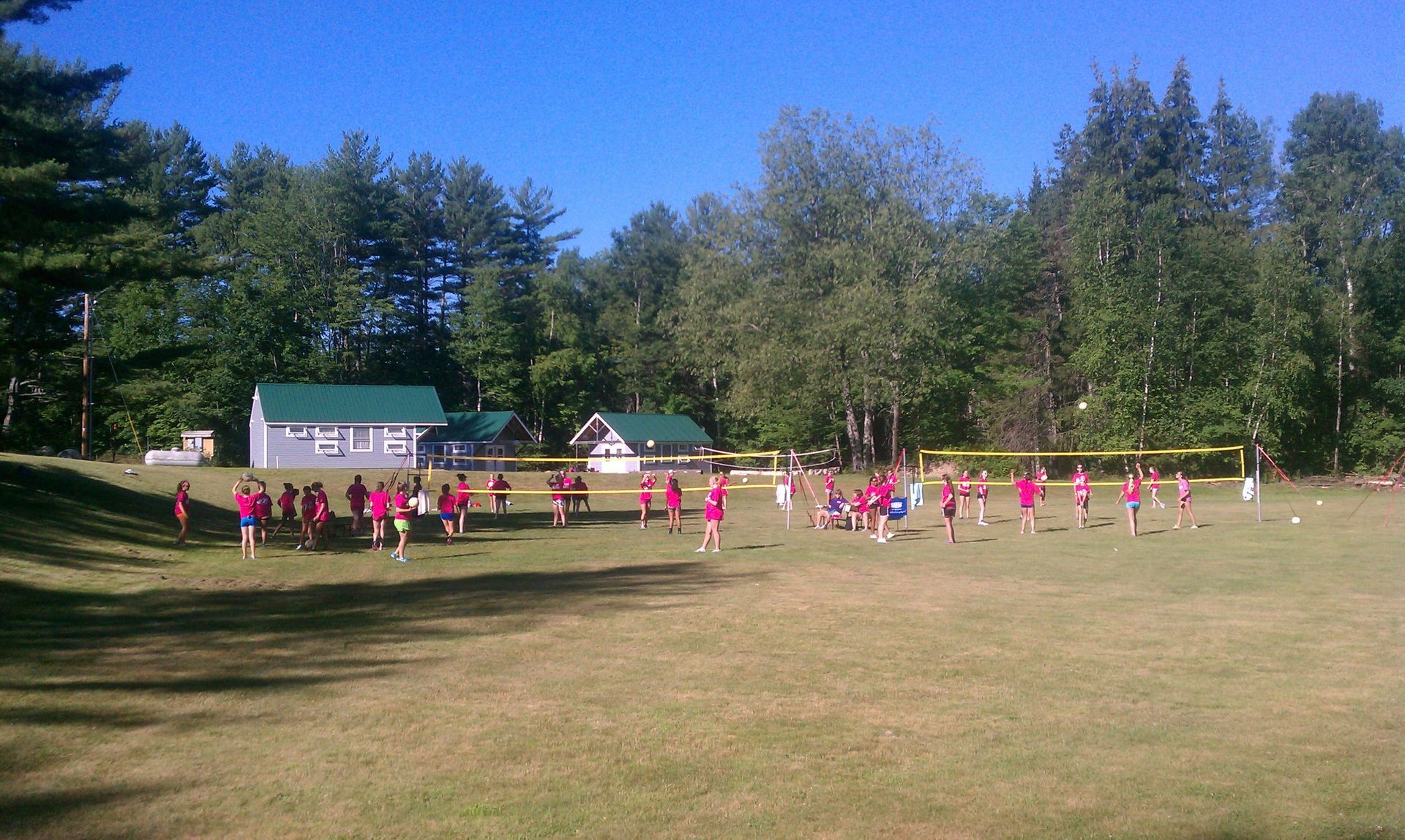
Fun Communication Games for Team Building
Communication games are crucial for strengthening teamwork and improving communication skills among team members. Games such as Charades, Snowball, and Puzzles provide fun ways to enhance communication as team members interact. These activities not only promote effective communication but also encourage team bonding and collaboration.
Activities like Emoji Decoding and Communication Origami explicitly promote skills like direction following and group problem-solving. By participating in these fun team building activities, team members can develop better communication skills while enjoying the process.
Back-to-Back Drawing
Back-to-Back Drawing is a fun and effective activity designed to promote communication and active listening. In this game, partners sit back-to-back; one describes an item, and the other draws it based solely on the verbal description provided. The activity requires a minimum of four participants and takes approximately 5–10 minutes to complete. This setup challenges team members to communicate clearly and listen attentively.
After the drawings are revealed, teams discuss their communication effectiveness and areas for improvement. This post-activity analysis helps participants understand the importance of clear communication and how it impacts their ability to work together effectively.
Counting with a Twist
Counting with a Twist is a simple yet powerful activity designed to enhance active listening and teamwork. In this game, players must count in sequence without speaking over each other, which encourages them to focus on one person at a time. This requires team members to be fully present and attentive, fostering better communication.
This activity not only improves communication skills but also strengthens teamwork through improved attentiveness and collaboration. Counting with a Twist is a fun team-building activity that helps team members develop their ability to listen and respond effectively.
Piece Together The Deck
In the Piece Together The Deck activity, teams must work collaboratively to organize a shuffled deck of cards within a set time limit. This quick team-building activity emphasizes the importance of communication and teamwork as participants must coordinate their efforts to achieve the objective.
By engaging in this activity, team members enhance their communication skills and learn to work together more effectively. The Piece Together The Deck activity is a great way to promote essential communication skills and teamwork among participants.
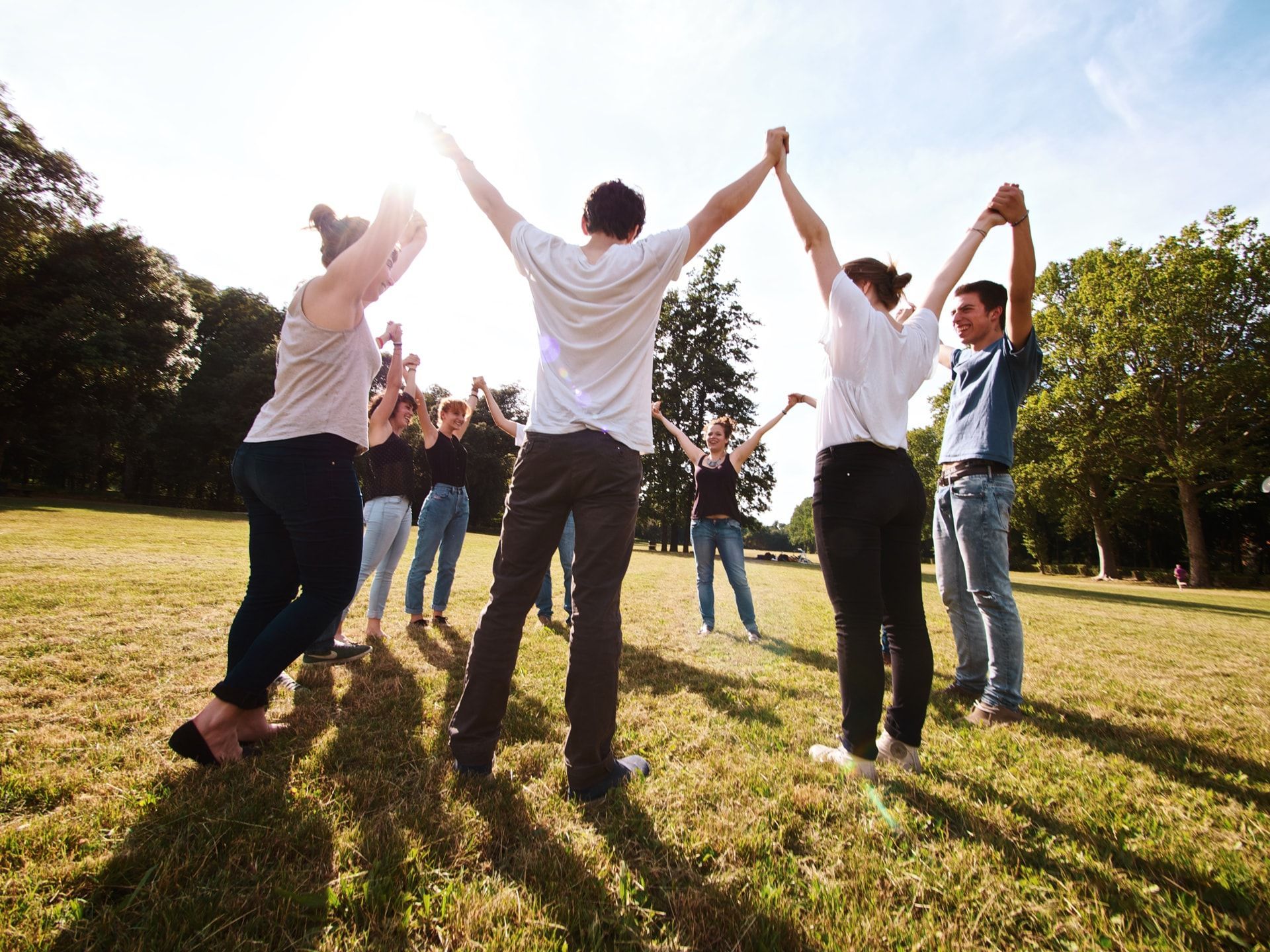
Creative Thinking Activities for Team Building
Engaging in creative thinking activities can spark innovation and encourage creative thinking among team members to think differently about common challenges. They break routine thought patterns and enhance collaboration by encouraging diverse problem-solving approaches. Creative thinking activities are fun and promote teamwork and strategic thinking.
Activities such as the ‘Your first idea’ game, where team members write down the first idea that comes to mind when presented with a problem, encourage spontaneous thinking and uncover new perspectives. These exercises help teams develop creative problem-solving skills and foster a culture of innovation.
Sales Pitch
In the Sales Pitch activity, participants create a logo, slogan, and marketing plan for a random object. This activity requires a group size of eight people and a time commitment of about 45 minutes. The purpose of the Sales Pitch activity is to build collaboration among team members as they work together to develop and present their ideas.
Participants learn to present and defend their ideas concisely, fostering creativity and enhancing communication skills as team members learn. This activity is an excellent way to encourage teamwork and innovation within a group.
Innovators' Auction
The Innovators’ Auction activity is designed to foster negotiation skills and resource management among team members. Participants showcase public speaking and innovation skills during the innovator’s pitch, encouraging creativity and problem-solving. This activity typically involves groups of 5-8 people and requires a time commitment of 30-40 minutes.
Such challenges encourage teams to adapt to dynamic situations, crucial for effective negotiation and collaboration. The Innovators’ Auction activity helps teams develop strategic thinking and enhances their ability to work together under pressure.
Paper Tower Challenge
The objective of the Paper Tower Challenge is to create a freestanding structure that can hold a marshmallow at the top. This activity is suitable for groups of 4-8 people and typically takes about 20-30 minutes to complete. Participants are provided with materials such as paper and tape to build their towers.
This challenge promotes teamwork, creative problem-solving, and effective communication as team members must collaborate to design and construct their towers. The Paper Tower Challenge is a fun and engaging way to develop essential team-building skills.
Strategic Team Building Exercises
Strategic team building exercises are designed to align team members towards shared objectives and boost overall productivity. They create an environment that helps teams align with company missions and improve workplace perception and brand identity. Strategic exercises enhance team collaboration and conflict resolution skills.
Activities such as the ‘All the news’ activity get teammates excited for upcoming goals, thereby enhancing collaboration. Strategic team-building exercises are essential for fostering a cohesive and effective team environment, contributing to the team’s success.
Company Concentration
The purpose of the Company Concentration activity is to get teammates excited for upcoming goals and align them with the company’s mission. This activity is suitable for groups of 3-6 people and requires a time commitment of 20-30 minutes.
The Company Concentration activity helps team members understand their roles and contributions to overall success. It fosters communication, collaboration, and bonding, improving team performance and cohesion.
Minefield
The purpose of the Minefield activity is to improve trust and partnership among team members. This activity requires at least four people, sorted into pairs, and can accommodate 8-16 participants. The duration of the Minefield activity is typically 15-30 minutes, and it requires 20 small objects for setup.
In the Minefield activity, one partner is a blindfolded person and led through an obstacle course by the seeing partner, sometimes carrying a fragile object for added difficulty. This activity enhances communication, trust, and teamwork as participants must rely on each other to navigate the obstacles successfully.
Shrinking Vessel
In the Shrinking Vessel activity, teams must adapt to decreasing space, requiring collaboration and effective communication under pressure. This activity challenges team members to think creatively and work together to achieve a common goal.
The Shrinking Vessel activity helps teams develop problem-solving skills and enhance effective communication. This activity is a great way to promote teamwork and strategic thinking within a group.
Quick Icebreaker Activities
Icebreakers are intended to engage participants and create a comfortable atmosphere for team discussions. Quick icebreaker activities are perfect for new teams or for warming up before more intensive team-building exercises. These activities help break the ice and encourage team bonding.
The Awareness Circle and Best and Worst activities promote personal sharing and bonding. These quick team-building activities help members develop better communication skills and create a cohesive team environment.
Two Truths and a Lie
The purpose of the activity ‘Two Truths and a Lie’ is to build familiarity between colleagues. In this game, each participant shares two true statements and one false statement about themselves, and the others must guess which one is the lie. The ideal team size for this game is between 5-8 people, and the activity typically takes around 30 minutes.
The game facilitates sharing and conversation starters, fostering a relaxed environment for personal details.
Two Truths and a Lie is an excellent way to build trust and familiarity within a team.
One-Word Icebreaker Game
The one-word icebreaker game helps collect opinions and feelings about a work affair. In this game, participants are asked to describe their feelings or opinions about a particular topic using just one word. The group size for this activity is typically 4-5 people per smaller groups, and it requires approximately 20 minutes to complete.
It encourages succinct expression of thoughts and fosters better communication and understanding within the entire team, and it encourages team members.
The One-Word Icebreaker Game is a fun and effective way to kickstart team discussions and engagement.
Office Trivia
Trivia games can include various topics such as office trivia, TV shows, music, and national parks. For Office Trivia, the recommended group size is 5 to 20 people, ensuring sufficient participants for engaging competition. The suggested time commitment for Office Trivia games is approximately 30 to 45 minutes, allowing for an engaging yet concise experience.
Trivia games enhance team engagement by fostering a fun competitive atmosphere among colleagues. By participating in Office Trivia, team members can bond over shared knowledge and interests, creating a more cohesive team environment.
Virtual Team Building Activities
Virtual team building activities help remote teams stay connected and engaged. ‘Can You Hear Me Now?’ enhances communication through drawing based on verbal descriptions. These activities help remote teams improve their communication and collaboration skills.
Using work hours for virtual team-building exercises increases participation and effectiveness. Utilizing tools like online games and breakout rooms ensures effective communication and engagement during virtual activities.
Can You Hear Me Now?
In the ‘Can You Hear Me Now?’ activity, participants draw items based on only verbal instructions. This game enhances communication and listening skills as team members must clearly convey and interpret instructions without visual cues.
This activity helps remote teams develop better listening skills and improve effective communication. ‘Can You Hear Me Now?’ is a fun and engaging way to strengthen team connections and collaboration.
Virtual Scavenger Hunt
Virtual Scavenger Hunts have participants complete tasks in pairs or small groups. This activity fosters bonding and teamwork among remote team members who may not know each other well. A suitable team size for a scavenger hunt is 8+ people, and it typically lasts 45–90 minutes.
Offering prizes for the most creative team enhances motivation during a scavenger hunt. Additionally, rewarding the first team to finish can also encourage participants to engage more actively. Virtual Scavenger Hunts are a great way to engage remote teams and promote collaboration and problem-solving skills.
Online Escape Room
Online escape rooms are a creative way for teams to solve puzzles and riddles in a virtual environment. Engaging in online escape rooms improves team dynamics by fostering collaboration in problem-solving scenarios. These activities enhance problem-solving skills as team members must work together to complete challenges.
Online escape rooms significantly boost employee engagement, as participants find them enjoyable and stimulating. Such activities help remote teams improve communication skills and overall performance.
Physical Team Building Activities
Physical team building activities aim to improve teamwork, problem solving, communication, collaboration, and creative thinking. Participants gain fun experiences while working together and reflecting on their learning. The best team building activities, such as the Spider Web, Perfect Square, and Show and Tell, enhance team bonding and collaboration.
Such activities help team members develop better communication skills and create a cohesive team environment. Physical activities are a great way to promote teamwork and problem-solving skills within a group.
Human Knot
The objective of the Human Knot activity is to untangle without letting go of hands. This activity can accommodate 8 to 16 participants, facilitating teamwork through physical interaction. Participants must communicate and collaborate to solve the problem, enhancing team connections.
The Human Knot activity is a fun and engaging way to promote teamwork and problem-solving skills. This activity helps team members develop better communication skills and foster a cohesive team environment.
Blind Square – Rope Game
The objective of the Blind Square – Rope Game is to form a perfect square while blindfolded. This activity requires a team size of 4–12 people and typically lasts 15–30 minutes. Participants must pass the rope to form a perfect square, often resulting in funny imperfect squares.
The Blind Square game enhances team members’ ability to communicate effectively under constraints, fostering teamwork. This activity is a fun and engaging way to promote communication and collaboration within a team.
Crocodile River
The Crocodile River team building activity is designed to challenge teamwork and enhance problem-solving skills. Team members are required to provide physical support to each other and engage in creative problem-solving during the activity. This activity emphasizes essential skills such as communication, cooperation, leadership, and problem-solving.
To achieve the best results from the Crocodile River activity, a debriefing session should be conducted to reflect on the experience. This activity helps team members develop better communication skills and foster a cohesive team environment.
Summary
In summary, effective communication and team building activities are essential for creating a cohesive and high-performing team. By participating in various communication games, creative thinking exercises, strategic team-building tasks, and virtual activities, teams can enhance their communication skills, build trust, resolve conflicts, and improve overall team dynamics. These activities foster a sense of belonging and commitment, leading to better team performance and employee engagement.
Incorporating these activities into your team’s routine can significantly boost their efficiency and collaboration. So, take the first step towards a more connected and efficient team by implementing these top 35 communication and team building activities. Your team will thank you for it!
Looking for the perfect setting to put these team-building activities into action? Geneva Point Center offers a stunning natural backdrop and the ideal environment for meaningful connection and growth.
Frequently Asked Questions
What are the benefits of team building activities?
Team building activities significantly enhance interpersonal relationships and boost team dynamics, leading to improved engagement and problem-solving skills. Embrace these activities for a more cohesive and effective team!
How do team building activities improve communication skills?
Team building activities enhance communication skills by allowing team members to engage in clear dialogue, practice active listening, and collaborate effectively. Embrace these experiences to elevate your team's communication to new heights!
Can virtual team building activities be effective for remote teams?
Absolutely! Virtual team building activities like online scavenger hunts and escape rooms can significantly boost communication and collaboration, making your remote team more engaged and connected.
What is the purpose of icebreaker activities?
Icebreaker activities are essential for fostering engagement and creating a comfortable environment where team members can connect and interact. Embrace them to build stronger relationships and enhance collaboration!
How do physical team building activities promote teamwork?
Physical team building activities foster teamwork by encouraging members to collaborate, communicate effectively, and solve challenges together. Embrace these activities to strengthen your team's bond and enhance collaboration!
More Articles from Geneva Point Center








